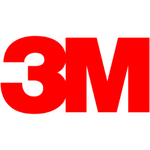Food Amino Acid Market Synopsis
The Food Amino Acid market estimated at USD 7.18 Billion in the year 2022, is projected to reach a revised size of USD 12.90 Billion by 2030, growing at a CAGR of 7.6% over the analysis period 2023-2030.
Food Amino Acids are molecules combined and used by all living things to form proteins. Essential amino acids include isoleucine, histidine, leucine, methionine, lysine, phenylalanine, threonine, valine, and tryptophan. Major foods that contain amino acids are meat, poultry, soy, black beans, cheese, mushroom, peanuts, dairy, beans, legumes, fish, chicken, quinoa, grains, and nuts.
- The Food Amino Acid Market has witnessed significant growth in recent years, driven by increasing consumer awareness about the health benefits of amino acids and their essential role in the human diet. Amino acids are the building blocks of proteins and play a crucial role in various physiological functions.
- The market is propelled by the rising demand for protein-rich food products, especially in the context of the growing fitness and health-conscious consumer base. Amino acids are not only essential for muscle development but also contribute to overall well-being, making them a key ingredient in sports nutrition and dietary supplements.
- Additionally, the food industry's focus on product innovation and the development of functional foods has further boosted the demand for amino acids. The market is characterized by a diverse range of amino acid products, including glutamic acid, lysine, methionine, and others, catering to different nutritional needs.

Food Amino Acid Market Trend Analysis
Essential Benefits of Methionine and Glutamic Acid
- Methionine and glutamic acid play pivotal roles in the Food Amino Acid Market, driving its growth due to their essential benefits. Methionine, an indispensable amino acid, is crucial for protein synthesis, aiding in muscle development and supporting overall growth. It serves as a building block for various proteins and enzymes, contributing to the nutritional value of food products. Additionally, methionine is vital for the synthesis of other amino acids, making it an essential component for maintaining a balanced amino acid profile.
- Glutamic acid, another key amino acid, enhances the flavor of food as it is a major component of umami, the fifth basic taste. This amino acid is a natural flavor enhancer, commonly found in protein-rich foods, and is widely used in the food industry to improve taste and palatability. Beyond its role in flavor enhancement, glutamic acid also participates in various metabolic processes, supporting overall health.
- The demand for food products enriched with these essential amino acids has surged, driven by the growing awareness of their nutritional benefits. As a result, the Food Amino Acid Market is experiencing significant expansion, with manufacturers incorporating methionine and glutamic acid into a variety of food formulations to meet consumer preferences for healthier and more flavourful dietary options.
Soaring Demand for Plant-based Food products creates an Opportunity Line Here
- The surging demand for plant-based food products presents a lucrative opportunity for the Food Amino Acid Market. As consumers increasingly prioritize health, sustainability, and ethical considerations, there has been a remarkable shift towards plant-based diets. Amino acids, essential building blocks of proteins, play a crucial role in the nutritional profile of plant-based foods, enhancing their appeal.
- Plant-based food products require careful formulation to ensure they offer complete and balanced protein profiles, making amino acids a vital component in product development. Manufacturers can capitalize on this trend by incorporating amino acids into plant-based formulations, addressing nutritional gaps and enhancing the overall quality of these products. Additionally, amino acids contribute to flavor enhancement, providing a savory and satisfying taste that appeals to consumers transitioning from traditional meat-based diets.
- Furthermore, the Food Amino Acid Market can explore innovative solutions to enhance the nutritional content of plant-based foods, creating opportunities for fortified products that meet the diverse needs of health-conscious consumers. This growing market aligns with the global shift towards sustainable and plant-centric lifestyles, positioning the Food Amino Acid Market as a key player in the evolving landscape of modern dietary preferences.
Food Amino Acid Market Segment Analysis:
Food Amino Acid Market Segmented on the basis of type, application, and source.
By Type, Glutamic acid segment is expected to dominate the market during the forecast period
- Food Amino Acid Market, the Glutamic Acid segment is poised to assert its dominance. Glutamic acid, a non-essential amino acid, plays a crucial role in enhancing the taste and flavor of various food products, making it a key component in the food industry. As a type of amino acid, glutamic acid contributes to the umami taste, which is often described as a savory or meaty flavor, thereby elevating the overall palatability of food items.
- The growing consumer preference for flavorsome and savory food experiences is a major driver behind the prominence of the glutamic acid segment. Additionally, the food processing industry recognizes glutamic acid as a versatile ingredient with applications in a wide range of products, including snacks, soups, sauces, and seasonings. Its multifaceted uses and ability to enhance the sensory appeal of food make glutamic acid a go-to choose for food manufacturers seeking to meet consumer demand for rich and satisfying taste profiles.
- As global food preferences evolve and demand for enhanced sensory experiences continues to rise, the glutamic acid segment is expected to maintain its leading position in the Food Amino Acid Market, reflecting its significant contribution to the flavor enhancement of diverse food products.
By Source, Plant-based segment held the largest share of 47.9% in 2022
- The Food Amino Acid Market is poised for significant growth, with the plant-based segment expected to dominate, driven by evolving consumer preferences and a growing awareness of health and sustainability. As consumers increasingly seek plant-derived protein sources, the demand for plant-based amino acids has surged.
- Plant-based amino acids are derived from various plant proteins such as soy, peas, and wheat, offering a sustainable and ethical alternative to animal-based sources. This trend aligns with the rising popularity of vegetarian and vegan diets, as well as the broader shift towards sustainable and environmentally friendly food choices.
- Moreover, advancements in technology and processes for extracting amino acids from plant sources have enhanced the quality and availability of plant-based amino acids, further boosting their market share. The plant-based segment's dominance is also fueled by the rising concerns over animal welfare, environmental impact, and the desire for cleaner, more ethical food production practices.
Food Amino Acid Market Regional Insights:
Asia Pacific is Expected to Dominate the Market Over the Forecast period
- The Asia Pacific region is poised to assert its dominance in the food amino acid market, exhibiting robust growth and emerging as a key player in the global landscape. Several factors contribute to this anticipated dominance, including the region's large and diverse population, rapid urbanization, and a burgeoning middle class with an increasing demand for processed and protein-rich foods.
- As consumer preferences shift towards healthier and more nutritious dietary choices, the demand for food amino acids, essential building blocks of proteins, is expected to surge. Additionally, the Asia Pacific region is home to several key economies with a thriving food and beverage industry, further fueling the market's growth. The rising awareness of the health benefits associated with amino acids, such as improved metabolism and muscle development, is propelling the market forward.
- Government initiatives supporting the food industry, coupled with advancements in food technology and production processes, contribute to the region's dominance. Major players in the food amino acid market are strategically focusing on expanding their presence in Asia Pacific to capitalize on the burgeoning market opportunities, further solidifying the region's anticipated leadership in this sector.
Food Amino Acid Market Top Key Players:
- Kemin Industries, Inc. (USA)
- Pacific Rainbow International Inc. (US)
- Kingchem LLC (US)
- Sigma-Aldrich, Co. LLC. (US)
- Prinova Group LLC. (US)
- Phibro Animal Health Corporation (USA)
- ANGUS Chemical Company (USA)
- Rochem International Inc. (New York)
- Evonik Industries AG (Germany)
- Taiyo International (Germany)
- Brenntag AG (Germany)
- Azelis S.A (Europe)
- Mycsa AG (Switzerland)
- Royal DSM N.V. (Netherlands)
- Sunthenine By Taiyo International Inc. (Japan)
- Donboo Amino Acid Co., Ltd. (Japan)
- Ajinomoto Co., Inc. (Japan)
- Kyowa Hakko Kirin Co., Ltd. (Japan)
- Daesang Corporation (Korea)
- Qingdao Samin Chemical Co., Ltd. (China)
- Hugestone Enterprise Co., Ltd. (China)
- Qingdao Samin Chemical Co., Ltd (China)
- Taiwan Amino Acids Co. Ltd. (China)
Key Industry Developments in the Food Amino Acid Market:
- In July 2023, South Korean food giant CJ CheilJedang acquired US-based vegan ingredient start-up Biotech Foods for an undisclosed amount. This move bolstered CJ CheilJedang's presence in the growing plant-based amino acid market, particularly pea protein.
- In May 2023, Kyowa Hakko Bio announced a breakthrough in fermentation technology for L-arginine, a conditionally essential amino acid with various health benefits. This innovation has the potential to make L-arginine production more efficient and cost-effective.
|
Global Food Amino Acid Market |
|||
|
Base Year: |
2022 |
Forecast Period: |
2023-2030 |
|
Historical Data: |
2017 to 2022 |
Market Size in 2022: |
USD 7.18 Bn. |
|
Forecast Period 2023-30 CAGR: |
7.6% |
Market Size in 2030: |
USD 12.90 Bn. |
|
Segments Covered: |
By Type |
|
|
|
By Application |
|
||
|
By Source |
|
||
|
By Region |
|
||
|
Key Market Drivers: |
|
||
|
Key Market Restraints: |
|
||
|
Key Opportunities: |
|
||
|
Companies Covered in the report: |
|
||
- INTRODUCTION
- RESEARCH OBJECTIVES
- RESEARCH METHODOLOGY
- RESEARCH PROCESS
- SCOPE AND COVERAGE
- Market Definition
- Key Questions Answered
- MARKET SEGMENTATION
- EXECUTIVE SUMMARY
- MARKET OVERVIEW
- GROWTH OPPORTUNITIES BY SEGMENT
- MARKET LANDSCAPE
- PORTER’S FIVE FORCES ANALYSIS
- Bargaining Power Of Supplier
- Threat Of New Entrants
- Threat Of Substitutes
- Competitive Rivalry
- Bargaining Power Among Buyers
- INDUSTRY VALUE CHAIN ANALYSIS
- MARKET DYNAMICS
- Drivers
- Restraints
- Opportunities
- Challenges
- MARKET TREND ANALYSIS
- REGULATORY LANDSCAPE
- PESTLE ANALYSIS
- PRICE TREND ANALYSIS
- PATENT ANALYSIS
- TECHNOLOGY EVALUATION
- MARKET IMPACT OF THE RUSSIA-UKRAINE WAR
- Geopolitical Market Disruptions
- Supply Chain Disruptions
- Instability in Emerging Markets
- ECOSYSTEM
- PORTER’S FIVE FORCES ANALYSIS
- FOOD AMINO ACID MARKET BY TYPE (2016-2030)
- FOOD AMINO ACID MARKET SNAPSHOT AND GROWTH ENGINE
- MARKET OVERVIEW
- GLUTAMIC ACID
- Introduction And Market Overview
- Historic And Forecasted Market Size in Value (2016 – 2030F)
- Historic And Forecasted Market Size in Volume (2016 – 2030F)
- Key Market Trends, Growth Factors And Opportunities
- Geographic Segmentation Analysis
- LYSINE
- TRYPTOPHAN
- METHIONINE
- FOOD AMINO ACID MARKET BY APPLICATION (2016-2030)
- FOOD AMINO ACID MARKET SNAPSHOT AND GROWTH ENGINE
- MARKET OVERVIEW
- DIETARY SUPPLEMENTS
- Introduction And Market Overview
- Historic And Forecasted Market Size in Value (2016 – 2030F)
- Historic And Forecasted Market Size in Volume (2016 – 2030F)
- Key Market Trends, Growth Factors And Opportunities
- Geographic Segmentation Analysis
- INFANT FORMULA
- FOOD FORTIFICATION
- CONVENIENCE FOODS
- FOOD AMINO ACID MARKET BY SOURCE (2016-2030)
- FOOD AMINO ACID MARKET SNAPSHOT AND GROWTH ENGINE
- MARKET OVERVIEW
- PLANT-BASED
- Introduction And Market Overview
- Historic And Forecasted Market Size in Value (2016 – 2030F)
- Historic And Forecasted Market Size in Volume (2016 – 2030F)
- Key Market Trends, Growth Factors And Opportunities
- Geographic Segmentation Analysis
- ANIMAL-BASED
- SYNTHETIC
- COMPANY PROFILES AND COMPETITIVE ANALYSIS
- COMPETITIVE LANDSCAPE
- Competitive Positioning
- FOOD AMINO ACID Market Share By Manufacturer (2022)
- Industry BCG Matrix
- Heat Map Analysis
- Mergers & Acquisitions
- KEMIN INDUSTRIES, INC. (USA)
- Company Overview
- Key Executives
- Company Snapshot
- Role of the Company in the Market
- Sustainability and Social Responsibility
- Operating Business Segments
- Product Portfolio
- Business Performance (Production Volume, Sales Volume, Sales Margin, Production Capacity, Capacity Utilization Rate)
- Key Strategic Moves And Recent Developments
- SWOT Analysis
- PACIFIC RAINBOW INTERNATIONAL INC. (US)
- KINGCHEM LLC (US)
- SIGMA-ALDRICH, CO. LLC. (US)
- PRINOVA GROUP LLC. (US)
- PHIBRO ANIMAL HEALTH CORPORATION (USA)
- ANGUS CHEMICAL COMPANY (USA)
- ROCHEM INTERNATIONAL INC. (NEW YORK)
- EVONIK INDUSTRIES AG (GERMANY)
- TAIYO INTERNATIONAL (GERMANY)
- BRENNTAG AG (GERMANY)
- AZELIS S.A (EUROPE)
- MYCSA AG (SWITZERLAND)
- ROYAL DSM N.V. (NETHERLANDS)
- SUNTHENINE BY TAIYO INTERNATIONAL INC. (JAPAN)
- DONBOO AMINO ACID CO., LTD. (JAPAN)
- AJINOMOTO CO., INC.(JAPAN)
- KYOWA HAKKO KIRIN CO., LTD. (JAPAN)
- DAESANG CORPORATION (KOREA)
- QINGDAO SAMIN CHEMICAL CO., LTD. (CHINA)
- HUGESTONE ENTERPRISE CO., LTD. (CHINA)
- QINGDAO SAMIN CHEMICAL CO., LTD (CHINA)
- TAIWAN AMINO ACIDS CO. LTD. (CHINA)
- COMPETITIVE LANDSCAPE
- GLOBAL FOOD AMINO ACID MARKET BY REGION
- OVERVIEW
- NORTH AMERICA
- Key Market Trends, Growth Factors And Opportunities
- Key Manufacturers
- Historic And Forecasted Market Size By Type
- Historic And Forecasted Market Size By Application
- Historic And Forecasted Market Size By Source
- Historic And Forecasted Market Size By Country
- USA
- Canada
- Mexico
- EASTERN EUROPE
- Key Market Trends, Growth Factors And Opportunities
- Key Manufacturers
- Historic And Forecasted Market Size By Segments
- Historic And Forecasted Market Size By Country
- Russia
- Bulgaria
- The Czech Republic
- Hungary
- Poland
- Romania
- Rest Of Eastern Europe
- WESTERN EUROPE
- Key Market Trends, Growth Factors And Opportunities
- Key Manufacturers
- Historic And Forecasted Market Size By Segments
- Historic And Forecasted Market Size By Country
- Germany
- United Kingdom
- France
- The Netherlands
- Italy
- Spain
- Rest Of Western Europe
- ASIA PACIFIC
- Key Market Trends, Growth Factors And Opportunities
- Key Manufacturers
- Historic And Forecasted Market Size By Segments
- Historic And Forecasted Market Size By Country
- China
- India
- Japan
- South Korea
- Malaysia
- Thailand
- Vietnam
- The Philippines
- Australia
- New-Zealand
- Rest Of APAC
- MIDDLE EAST & AFRICA
- Key Market Trends, Growth Factors And Opportunities
- Key Manufacturers
- Historic And Forecasted Market Size By Segments
- Historic And Forecasted Market Size By Country
- Turkey
- Bahrain
- Kuwait
- Saudi Arabia
- Qatar
- UAE
- Israel
- South Africa
- SOUTH AMERICA
- Key Market Trends, Growth Factors And Opportunities
- Key Manufacturers
- Historic And Forecasted Market Size By Segments
- Historic And Forecasted Market Size By Country
- Brazil
- Argentina
- Rest of South America
- INVESTMENT ANALYSIS
- ANALYST VIEWPOINT AND CONCLUSION
- Recommendations and Concluding Analysis
- Potential Market Strategies
|
Global Food Amino Acid Market |
|||
|
Base Year: |
2022 |
Forecast Period: |
2023-2030 |
|
Historical Data: |
2017 to 2022 |
Market Size in 2022: |
USD 7.18 Bn. |
|
Forecast Period 2023-30 CAGR: |
7.6% |
Market Size in 2030: |
USD 12.90 Bn. |
|
Segments Covered: |
By Type |
|
|
|
By Application |
|
||
|
By Source |
|
||
|
By Region |
|
||
|
Key Market Drivers: |
|
||
|
Key Market Restraints: |
|
||
|
Key Opportunities: |
|
||
|
Companies Covered in the report: |
|
||
LIST OF TABLES
TABLE 001. EXECUTIVE SUMMARY
TABLE 002. FOOD AMINO ACIDS MARKET BARGAINING POWER OF SUPPLIERS
TABLE 003. FOOD AMINO ACIDS MARKET BARGAINING POWER OF CUSTOMERS
TABLE 004. FOOD AMINO ACIDS MARKET COMPETITIVE RIVALRY
TABLE 005. FOOD AMINO ACIDS MARKET THREAT OF NEW ENTRANTS
TABLE 006. FOOD AMINO ACIDS MARKET THREAT OF SUBSTITUTES
TABLE 007. FOOD AMINO ACIDS MARKET BY TYPE
TABLE 008. GLUTAMIC ACID MARKET OVERVIEW (2016-2028)
TABLE 009. LYSINE MARKET OVERVIEW (2016-2028)
TABLE 010. TRYPTOPHAN MARKET OVERVIEW (2016-2028)
TABLE 011. METHIONINE MARKET OVERVIEW (2016-2028)
TABLE 012. FOOD AMINO ACIDS MARKET BY APPLICATION
TABLE 013. DIETARY SUPPLEMENTS MARKET OVERVIEW (2016-2028)
TABLE 014. INFANT FORMULA MARKET OVERVIEW (2016-2028)
TABLE 015. FOOD FORTIFICATION MARKET OVERVIEW (2016-2028)
TABLE 016. CONVENIENCE FOODS MARKET OVERVIEW (2016-2028)
TABLE 017. FOOD AMINO ACIDS MARKET BY SOURCE
TABLE 018. PLANT-BASED MARKET OVERVIEW (2016-2028)
TABLE 019. ANIMAL-BASED MARKET OVERVIEW (2016-2028)
TABLE 020. SYNTHETIC MARKET OVERVIEW (2016-2028)
TABLE 021. NORTH AMERICA FOOD AMINO ACIDS MARKET, BY TYPE (2016-2028)
TABLE 022. NORTH AMERICA FOOD AMINO ACIDS MARKET, BY APPLICATION (2016-2028)
TABLE 023. NORTH AMERICA FOOD AMINO ACIDS MARKET, BY SOURCE (2016-2028)
TABLE 024. N FOOD AMINO ACIDS MARKET, BY COUNTRY (2016-2028)
TABLE 025. EUROPE FOOD AMINO ACIDS MARKET, BY TYPE (2016-2028)
TABLE 026. EUROPE FOOD AMINO ACIDS MARKET, BY APPLICATION (2016-2028)
TABLE 027. EUROPE FOOD AMINO ACIDS MARKET, BY SOURCE (2016-2028)
TABLE 028. FOOD AMINO ACIDS MARKET, BY COUNTRY (2016-2028)
TABLE 029. ASIA PACIFIC FOOD AMINO ACIDS MARKET, BY TYPE (2016-2028)
TABLE 030. ASIA PACIFIC FOOD AMINO ACIDS MARKET, BY APPLICATION (2016-2028)
TABLE 031. ASIA PACIFIC FOOD AMINO ACIDS MARKET, BY SOURCE (2016-2028)
TABLE 032. FOOD AMINO ACIDS MARKET, BY COUNTRY (2016-2028)
TABLE 033. MIDDLE EAST & AFRICA FOOD AMINO ACIDS MARKET, BY TYPE (2016-2028)
TABLE 034. MIDDLE EAST & AFRICA FOOD AMINO ACIDS MARKET, BY APPLICATION (2016-2028)
TABLE 035. MIDDLE EAST & AFRICA FOOD AMINO ACIDS MARKET, BY SOURCE (2016-2028)
TABLE 036. FOOD AMINO ACIDS MARKET, BY COUNTRY (2016-2028)
TABLE 037. SOUTH AMERICA FOOD AMINO ACIDS MARKET, BY TYPE (2016-2028)
TABLE 038. SOUTH AMERICA FOOD AMINO ACIDS MARKET, BY APPLICATION (2016-2028)
TABLE 039. SOUTH AMERICA FOOD AMINO ACIDS MARKET, BY SOURCE (2016-2028)
TABLE 040. FOOD AMINO ACIDS MARKET, BY COUNTRY (2016-2028)
TABLE 041. AJINOMOTO CO.: SNAPSHOT
TABLE 042. AJINOMOTO CO.: BUSINESS PERFORMANCE
TABLE 043. AJINOMOTO CO.: PRODUCT PORTFOLIO
TABLE 044. AJINOMOTO CO.: KEY STRATEGIC MOVES AND DEVELOPMENTS
TABLE 044. INC. (JAPAN): SNAPSHOT
TABLE 045. INC. (JAPAN): BUSINESS PERFORMANCE
TABLE 046. INC. (JAPAN): PRODUCT PORTFOLIO
TABLE 047. INC. (JAPAN): KEY STRATEGIC MOVES AND DEVELOPMENTS
TABLE 047. KYOWA HAKKO KIRIN CO. LTD. (JAPAN): SNAPSHOT
TABLE 048. KYOWA HAKKO KIRIN CO. LTD. (JAPAN): BUSINESS PERFORMANCE
TABLE 049. KYOWA HAKKO KIRIN CO. LTD. (JAPAN): PRODUCT PORTFOLIO
TABLE 050. KYOWA HAKKO KIRIN CO. LTD. (JAPAN): KEY STRATEGIC MOVES AND DEVELOPMENTS
TABLE 050. SIGMA-ALDRICH: SNAPSHOT
TABLE 051. SIGMA-ALDRICH: BUSINESS PERFORMANCE
TABLE 052. SIGMA-ALDRICH: PRODUCT PORTFOLIO
TABLE 053. SIGMA-ALDRICH: KEY STRATEGIC MOVES AND DEVELOPMENTS
TABLE 053. CO. LLC. (US): SNAPSHOT
TABLE 054. CO. LLC. (US): BUSINESS PERFORMANCE
TABLE 055. CO. LLC. (US): PRODUCT PORTFOLIO
TABLE 056. CO. LLC. (US): KEY STRATEGIC MOVES AND DEVELOPMENTS
TABLE 056. PRINOVA GROUP LLC. (US): SNAPSHOT
TABLE 057. PRINOVA GROUP LLC. (US): BUSINESS PERFORMANCE
TABLE 058. PRINOVA GROUP LLC. (US): PRODUCT PORTFOLIO
TABLE 059. PRINOVA GROUP LLC. (US): KEY STRATEGIC MOVES AND DEVELOPMENTS
TABLE 059. DAESANG CORPORATION (KOREA): SNAPSHOT
TABLE 060. DAESANG CORPORATION (KOREA): BUSINESS PERFORMANCE
TABLE 061. DAESANG CORPORATION (KOREA): PRODUCT PORTFOLIO
TABLE 062. DAESANG CORPORATION (KOREA): KEY STRATEGIC MOVES AND DEVELOPMENTS
TABLE 062. AZELIS S.A (EUROPE): SNAPSHOT
TABLE 063. AZELIS S.A (EUROPE): BUSINESS PERFORMANCE
TABLE 064. AZELIS S.A (EUROPE): PRODUCT PORTFOLIO
TABLE 065. AZELIS S.A (EUROPE): KEY STRATEGIC MOVES AND DEVELOPMENTS
TABLE 065. PACIFIC RAINBOW INTERNATIONAL INC. (US): SNAPSHOT
TABLE 066. PACIFIC RAINBOW INTERNATIONAL INC. (US): BUSINESS PERFORMANCE
TABLE 067. PACIFIC RAINBOW INTERNATIONAL INC. (US): PRODUCT PORTFOLIO
TABLE 068. PACIFIC RAINBOW INTERNATIONAL INC. (US): KEY STRATEGIC MOVES AND DEVELOPMENTS
TABLE 068. ROCHEM INTERNATIONAL INC. (NEW YORK): SNAPSHOT
TABLE 069. ROCHEM INTERNATIONAL INC. (NEW YORK): BUSINESS PERFORMANCE
TABLE 070. ROCHEM INTERNATIONAL INC. (NEW YORK): PRODUCT PORTFOLIO
TABLE 071. ROCHEM INTERNATIONAL INC. (NEW YORK): KEY STRATEGIC MOVES AND DEVELOPMENTS
TABLE 071. EVONIK INDUSTRIES AG (GERMANY): SNAPSHOT
TABLE 072. EVONIK INDUSTRIES AG (GERMANY): BUSINESS PERFORMANCE
TABLE 073. EVONIK INDUSTRIES AG (GERMANY): PRODUCT PORTFOLIO
TABLE 074. EVONIK INDUSTRIES AG (GERMANY): KEY STRATEGIC MOVES AND DEVELOPMENTS
TABLE 074. HUGESTONE ENTERPRISE CO. LTD. (CHINA): SNAPSHOT
TABLE 075. HUGESTONE ENTERPRISE CO. LTD. (CHINA): BUSINESS PERFORMANCE
TABLE 076. HUGESTONE ENTERPRISE CO. LTD. (CHINA): PRODUCT PORTFOLIO
TABLE 077. HUGESTONE ENTERPRISE CO. LTD. (CHINA): KEY STRATEGIC MOVES AND DEVELOPMENTS
TABLE 077. QINGDAO SAMIN CHEMICAL CO.: SNAPSHOT
TABLE 078. QINGDAO SAMIN CHEMICAL CO.: BUSINESS PERFORMANCE
TABLE 079. QINGDAO SAMIN CHEMICAL CO.: PRODUCT PORTFOLIO
TABLE 080. QINGDAO SAMIN CHEMICAL CO.: KEY STRATEGIC MOVES AND DEVELOPMENTS
TABLE 080. LTD (CHINA): SNAPSHOT
TABLE 081. LTD (CHINA): BUSINESS PERFORMANCE
TABLE 082. LTD (CHINA): PRODUCT PORTFOLIO
TABLE 083. LTD (CHINA): KEY STRATEGIC MOVES AND DEVELOPMENTS
TABLE 083. TAIYO INTERNATIONAL (GERMANY): SNAPSHOT
TABLE 084. TAIYO INTERNATIONAL (GERMANY): BUSINESS PERFORMANCE
TABLE 085. TAIYO INTERNATIONAL (GERMANY): PRODUCT PORTFOLIO
TABLE 086. TAIYO INTERNATIONAL (GERMANY): KEY STRATEGIC MOVES AND DEVELOPMENTS
TABLE 086. KINGCHEM LLC (US): SNAPSHOT
TABLE 087. KINGCHEM LLC (US): BUSINESS PERFORMANCE
TABLE 088. KINGCHEM LLC (US): PRODUCT PORTFOLIO
TABLE 089. KINGCHEM LLC (US): KEY STRATEGIC MOVES AND DEVELOPMENTS
TABLE 089. TAIWAN AMINO ACIDS CO. LTD. (CHINA): SNAPSHOT
TABLE 090. TAIWAN AMINO ACIDS CO. LTD. (CHINA): BUSINESS PERFORMANCE
TABLE 091. TAIWAN AMINO ACIDS CO. LTD. (CHINA): PRODUCT PORTFOLIO
TABLE 092. TAIWAN AMINO ACIDS CO. LTD. (CHINA): KEY STRATEGIC MOVES AND DEVELOPMENTS
TABLE 092. BRENNTAG AG (GERMANY): SNAPSHOT
TABLE 093. BRENNTAG AG (GERMANY): BUSINESS PERFORMANCE
TABLE 094. BRENNTAG AG (GERMANY): PRODUCT PORTFOLIO
TABLE 095. BRENNTAG AG (GERMANY): KEY STRATEGIC MOVES AND DEVELOPMENTS
TABLE 095. OTHER MAJOR PLAYERS: SNAPSHOT
TABLE 096. OTHER MAJOR PLAYERS: BUSINESS PERFORMANCE
TABLE 097. OTHER MAJOR PLAYERS: PRODUCT PORTFOLIO
TABLE 098. OTHER MAJOR PLAYERS: KEY STRATEGIC MOVES AND DEVELOPMENTS
LIST OF FIGURES
FIGURE 001. YEARS CONSIDERED FOR ANALYSIS
FIGURE 002. SCOPE OF THE STUDY
FIGURE 003. FOOD AMINO ACIDS MARKET OVERVIEW BY REGIONS
FIGURE 004. PORTER'S FIVE FORCES ANALYSIS
FIGURE 005. BARGAINING POWER OF SUPPLIERS
FIGURE 006. COMPETITIVE RIVALRYFIGURE 007. THREAT OF NEW ENTRANTS
FIGURE 008. THREAT OF SUBSTITUTES
FIGURE 009. VALUE CHAIN ANALYSIS
FIGURE 010. PESTLE ANALYSIS
FIGURE 011. FOOD AMINO ACIDS MARKET OVERVIEW BY TYPE
FIGURE 012. GLUTAMIC ACID MARKET OVERVIEW (2016-2028)
FIGURE 013. LYSINE MARKET OVERVIEW (2016-2028)
FIGURE 014. TRYPTOPHAN MARKET OVERVIEW (2016-2028)
FIGURE 015. METHIONINE MARKET OVERVIEW (2016-2028)
FIGURE 016. FOOD AMINO ACIDS MARKET OVERVIEW BY APPLICATION
FIGURE 017. DIETARY SUPPLEMENTS MARKET OVERVIEW (2016-2028)
FIGURE 018. INFANT FORMULA MARKET OVERVIEW (2016-2028)
FIGURE 019. FOOD FORTIFICATION MARKET OVERVIEW (2016-2028)
FIGURE 020. CONVENIENCE FOODS MARKET OVERVIEW (2016-2028)
FIGURE 021. FOOD AMINO ACIDS MARKET OVERVIEW BY SOURCE
FIGURE 022. PLANT-BASED MARKET OVERVIEW (2016-2028)
FIGURE 023. ANIMAL-BASED MARKET OVERVIEW (2016-2028)
FIGURE 024. SYNTHETIC MARKET OVERVIEW (2016-2028)
FIGURE 025. NORTH AMERICA FOOD AMINO ACIDS MARKET OVERVIEW BY COUNTRY (2016-2028)
FIGURE 026. EUROPE FOOD AMINO ACIDS MARKET OVERVIEW BY COUNTRY (2016-2028)
FIGURE 027. ASIA PACIFIC FOOD AMINO ACIDS MARKET OVERVIEW BY COUNTRY (2016-2028)
FIGURE 028. MIDDLE EAST & AFRICA FOOD AMINO ACIDS MARKET OVERVIEW BY COUNTRY (2016-2028)
FIGURE 029. SOUTH AMERICA FOOD AMINO ACIDS MARKET OVERVIEW BY COUNTRY (2016-2028)
Frequently Asked Questions :
The forecast period in the Food Amino Acid Market research report is 2023-2030.
Kemin Industries, Inc. (USA), Pacific Rainbow International Inc. (US), Kingchem LLC (US), Sigma-Aldrich, Co. LLC. (US), Prinova Group LLC. (US), Phibro Animal Health Corporation (USA), ANGUS Chemical Company (USA), Rochem International Inc. (New York), Evonik Industries AG (Germany), Taiyo International (Germany), Brenntag AG (Germany), Azelis S.A (Europe), Mycsa AG (Switzerland), Royal DSM N.V. (Netherlands), Sunthenine By Taiyo International Inc. (Japan), Donboo Amino Acid Co., Ltd. (Japan), Ajinomoto Co., Inc. (Japan), Kyowa Hakko Kirin Co., Ltd. (Japan), Daesang Corporation (Korea), Qingdao Samin Chemical Co., Ltd. (China), Hugestone Enterprise Co., Ltd. (China), Qingdao Samin Chemical Co., Ltd (China), Taiwan Amino Acids Co. Ltd. (China) and Other Major Players.
The Food Amino Acid Market is segmented into type, application, source and region. By Type, the market is categorized into Glutamic Acid, Lysine, Tryptophan, and Methionine. By Application, the market is categorized into Dietary Supplements, Infant Formula, Food Fortification, and Convenience Foods. By Source, the market is categorized into Plant-based, Animal-based, and Synthetic. By region, it is analyzed across North America (U.S.; Canada; Mexico), Eastern Europe (Bulgaria; The Czech Republic; Hungary; Poland; Romania; Rest of Eastern Europe), Western Europe (Germany; UK; France; Netherlands; Italy; Russia; Spain; Rest of Western Europe), Asia-Pacific (China; India; Japan; Southeast Asia, etc.), South America (Brazil; Argentina, etc.), Middle East & Africa (Saudi Arabia; South Africa, etc.).
Food Amino Acids are molecules combined and used by all living things to form proteins. The increased utilization of glutamic acid as a savoury ingredient in sauces, snacks, and ready-to-eat soups, is anticipated to boost the demand of food amino acids.
The Food Amino Acid market estimated at USD 7.18 Billion in the year 2022, is projected to reach a revised size of USD 12.90 Billion by 2030, growing at a CAGR of 7.6% over the analysis period 2023-2030.


































